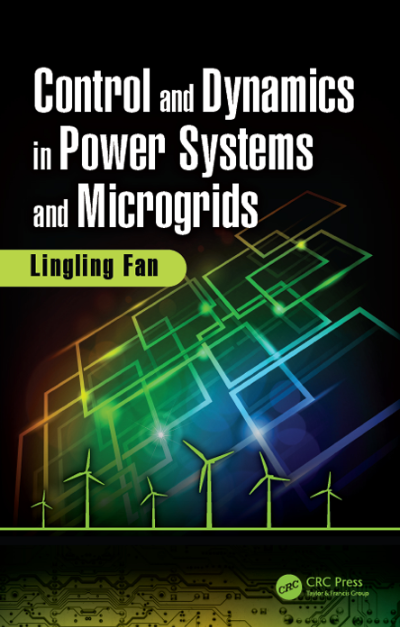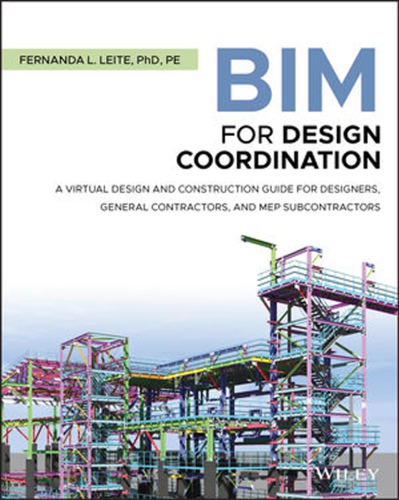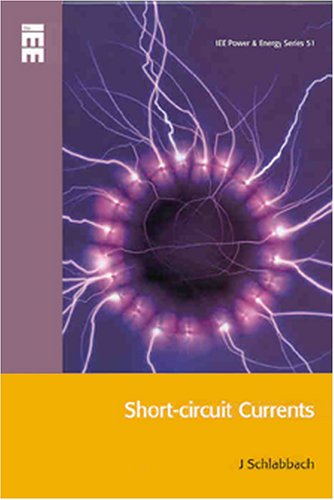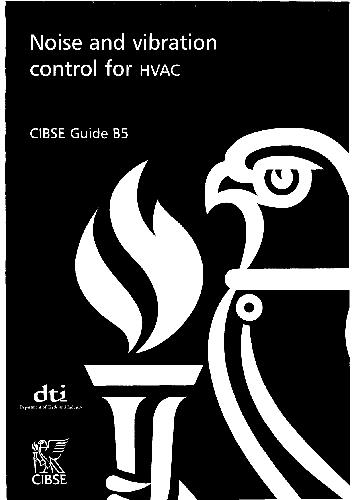| Book Name: | [PDF] Control and Dynamics in Power Systems and Microgrids by Lingling Fan |
| Category: | Engineering Books |
| Language: | English |
| Format: | |
| Free Download: | Available |
Download PDF of Control and Dynamics in Power Systems and Microgrids by Lingling Fan | PDF Free Download.

| Book Details : | |
|---|---|
| Language | English |
| Pages | 231 |
| Format | |
| Size | 21.1 MB |
Control and Dynamics in Power Systems and Microgrids by Lingling Fan
Control and Dynamics Contents
Part I: Control
- Dynamic Simulation
- Frequency Control
- Synchronous Generator Models
- Voltage Control
- Frequency and Voltage Control in Microgrids
Part II: Dynamics
- Large-Signal Stability
- Small-Signal Stability
Preface to Control and Dynamics in Power Systems and Microgrids
The main part of the book was written in Spring 2016 when the author taught Power Systems II, a graduate course at University of South Florida, Tampa Florida. The course was designed to focus on control and dynamics of power systems.
Bergen and Vittal’s book, Power System Analysis, was adopted as the textbook. Dynamics and control, especially in the area of power systems applications where rotating magnetic fields are involved, is a formidable subject to students.
Hence, a set of class notes was developed in that semester to offer a tutorial approach of learning. Many examples and codes were developed to facilitate understanding and hands-on training. A highlight of this textbook is its many tutorial examples.
The first version of Bergen and Vittal’s book was written in 1981 by Professor Bergen. Thirty-six years have passed since then.
This classic textbook has been highly recognized and helped to educate a generation of power systems engineers. Professor Bergen passed away in July 2014.
As a power systems engineer, this author would like to contribute to the field by reinterpreting the classics of power system control and dynamics.
This textbook is also a tribute to Professor Bergen. There will be several things different from the classic textbook.
The generator model derivation is very sophisticated in Bergen and Vittal (2009). In Bergen and Vittal (2009), Park’s transformation was employed to derive generator models.
The alternative of Park’s transformation is space vector and complex vector transformation, a concept used much more often in machines and power electronics after the 1980s.
The space vector concept makes Park’s transformation straightforward. In this textbook, the author will explain synchronous generator dynamics, the most formidable dynamics in power systems, using space vector concepts. In the 1980s, power electronics and microgrids were yet to be developed.
This field is well developed in the 21st century. Many techniques used in power systems for power sharing, e.g., droop control, can also be found in power electronic converter coordination.
This part is now related and put into the textbook to help readers understand converter control and coordination. This is another highlight of the textbook.
Advanced controls such as networked control (consensus control) were developed after 2000. Many classic engineering implementations follow the advanced control framework.
It is appealing to find them and interpret the intuitive engineering design with concepts and ideas from networked control. In this textbook, inter-area oscillations are explained using consensus control. Professor Bergen’s book has steady-state analysis and dynamics all together. This textbook focuses on dynamics and control only.
This author would also like to have a better flow to focus on power system control. Starting from the beginning, the ordinary differential equation, the building block of dynamics and control, is explained using examples.
Dynamic simulation and linear system analysis are conducted for the examples. With the fundamental concept of dynamics built, readers can then pursue the learning tasks related to power system control and dynamic stability with ease.
The flow of the text is to treat frequency or voltage control as control problems. For control problems, first we discuss the plant model and its related steady-state and dynamic responses. The plant model should be identified with the inputs and outputs specified.
In the frequency control case, it is obvious that the output of the plant model should be frequency. The inputs are from a generator’s mechanical system inputs. After setting up the plant model, we then think about how to design feedback controls to realize control objectives.
After the control design is conducted, we then employ dynamic simulation to verify controller performance.
The author is grateful to have the opportunity to write and publish this book through the CRC press. The author would like to acknowledge the University of South Florida Electrical Engineering Department for providing a great environment for conducting research and teaching.
The author wishes to acknowledge her family for their encouragement. The book was developed from the author’s class notes of Power Systems II for Spring 2016.
Minyue Ma, a Ph.D. student, was the teaching assistant for that course and helped work out examples and homework problems for the class. A few students in the class, e.g., Abdullah Alassaf, highly complimented the class notes, which encouraged the author to contact the CRC press for publication.
Yin Li, a Ph.D. student, built the MATLABr/Simulink models used in Chapter 6 Frequency and voltage control in microgrids. Yangkun Xu, another Ph.D. student drew many figures for Chapter 3 and Chapter 5.
Graduate students at the USF Power Systems Smart Grid Lab reviewed the book during the holiday season in December 2016. The author wishes to acknowledge Minyue Ma and Yin Li as reviewers. The author also wishes to acknowledge Yi Yang from Eaton Cooperation as a reviewer.
Control and dynamics in power systems and microgrids PDF
Author(s): FAN, LINGLING
Publisher: CRC Press, Year: 2017
ISBN: 978-1-1380-3499-0,1138034991
Description:
In traditional power system dynamics and control books, the focus is on synchronous generators. Within current industry, where renewable energy, power electronics converters, and microgrids arise, the related system-level dynamics and control need coverage. Wind energy system dynamics and microgrid system control are covered. The text also offers insight to using programming examples, state-of-the-art control design tools, and advanced control concepts to explain traditional power system dynamics and control. The reader will gain knowledge of dynamics and control in both synchronous generator-based power system and power electronic converter enabled renewable energy systems, as well as microgrids.
Download Control and Dynamics in Power Systems and Microgrids by Lingling Fan PDF Free.
Related Results : control and dynamics in power systems and microgrids,control and dynamics in power systems and microgrids pdf,
Related More Books
See More POST On : Engineering Books









![[PDF] Draw Buildings and Cities in 15 Minutes Draw Buildings and Cities in 15 Minutes pdf](https://www.freepdfbook.com/wp-content/uploads/2021/06/Draw-Buildings-and-Cities-in-15-Minutes-218x150.jpg)








![[PDF] Digital Image Processing An Algorithmic Introduction Using Java Digital Image Processing An Algorithmic Introduction Using Java](https://www.freepdfbook.com/wp-content/uploads/2022/06/Digital-Image-Processing-An-Algorithmic-Introduction-Using-Java.jpg)




![[PDF] 43 Years JEE ADVANCED + JEE MAIN Chapterwise & Topicwise Solved Papers 43 Years JEE ADVANCED (1978-2020) + JEE MAIN Chapterwise & Topicwise Solved Papers Physics PDF](https://www.freepdfbook.com/wp-content/uploads/2022/03/43-Years-JEE-ADVANCED-1978-2020.jpg)

![[PDF] Problems in Physical Chemistry for JEE (Main & Advanced) Problems in Physical Chemistry for JEE (Main & Advanced) Free PDF Book Download](https://www.freepdfbook.com/wp-content/uploads/2022/03/Problems-in-Physical-Chemistry-for-JEE-Main-Advanced.jpg)
![[PDF] Engineering Physics (McGraw Hill)](https://www.freepdfbook.com/wp-content/uploads/2021/05/bafc8c2685bb6823a9c56134f7fba5df.jpeg)

![[PDF] Engineering Chemistry By Shashi Chawla](https://www.freepdfbook.com/wp-content/uploads/2022/05/Theory-And-Practicals-of-Engineering-Chemistry-By-Shashi-Chawla-free-pdf-book.jpeg)
![[PDF] Chemistry: An Introduction to Organic, Inorganic & Physical Chemistry Chemistry: An Introduction to Organic, Inorganic & Physical Chemistry](https://www.freepdfbook.com/wp-content/uploads/2022/04/Chemistry-An-Introduction-to-Organic-Inorganic-Physical-Chemistry.jpg)
![[PDF] Essentials of Physical Chemistry Essentials of Physical Chemistry Free PDF Book by Bahl](https://www.freepdfbook.com/wp-content/uploads/2022/04/Essentials-of-Physical-Chemistry-bahl.jpg)
![[PDF] Biological control of plant-parasitic nematodes: soil ecosystem management in sustainable agriculture Biological control of plant-parasitic nematodes: soil ecosystem management in sustainable agriculture](https://www.freepdfbook.com/wp-content/uploads/2022/05/Biological-control-of-plant-parasitic-nematodes-soil-ecosystem-management-in-sustainable-agriculture.jpg)
![[PDF] Human Anatomy: Color Atlas and Textbook Human Anatomy: Color Atlas and Textbook Free PDF Book](https://www.freepdfbook.com/wp-content/uploads/2022/05/Human-Anatomy-Color-Atlas-and-Textbook.jpg)
![[PDF] Concepts of Biology Book [Free Download]](https://www.freepdfbook.com/wp-content/uploads/2022/05/Concepts-of-Biology.jpg)
![[PDF] Essentials of Biology [Free Download] Essentials of Biology Free PDF BOok Download](https://www.freepdfbook.com/wp-content/uploads/2022/05/Essentials-of-Biology-Free-PDF-Book-Downlaod.jpg)
![[PDF] Human Biology Book [Free Download]](https://www.freepdfbook.com/wp-content/uploads/2022/05/PDF-Human-Biology-Book-Free-Download.jpg)


